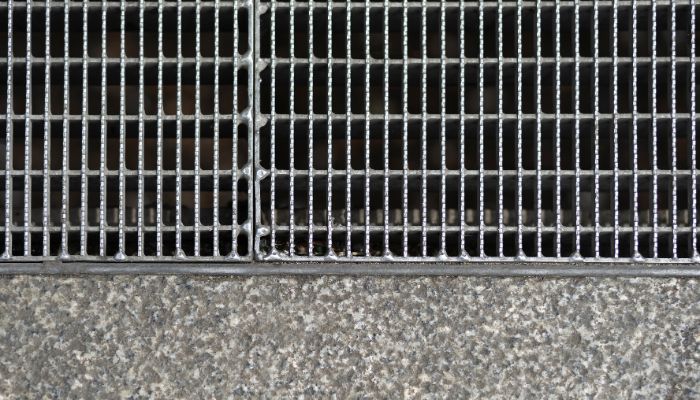9 Benefits of Installing Channel Drainage Around Your Home
Excess water around your home can cause flooding, foundation damage, and landscape erosion. Installing a channel drainage system efficiently redirects runoff, protects your property, and improves safety. In this guide, we explore 9 key benefits of installing channel drainage and how it can safeguard your home while enhancing curb appeal. 1. Prevents Flooding and Water Pooling One of the biggest benefits of channel drainage is its ability to redirect surface water away from problem areas. Driveways, patios, and garden paths often collect water after heavy rainfall, leading to slippery surfaces and puddles. A well-designed driveway drain channel captures runoff efficiently and directs it to the nearest outlet, keeping your outdoor areas dry, safe, and functional all year long. 2. Protects Your Foundation from Water Damage When rainwater collects near your foundation, it can seep into cracks, causing structural damage and costly repairs. Over time, this can weaken the base of your home and lead to basement leaks or mold growth. By adding channel drainage around the perimeter of your property, you’re ensuring that water flows away from your foundation, minimizing moisture buildup and long-term risks. 3. Increases Property Value and Curb Appeal Homeowners looking to boost the value of their property can benefit from channel drain installation. A properly installed drainage system enhances both function and aesthetics. It eliminates unsightly water marks, prevents driveway erosion, and adds a polished, professional touch to your landscape. 4. Keeps Driveways and Walkways Safe Standing water on driveways and walkways creates slippery, unsafe conditions. In colder climates, it can also lead to ice buildup and cracks in your pavement. Installing a driveway drain channel helps prevent these issues by diverting water before it becomes a hazard. This simple addition can make a huge difference in everyday safety, especially for homes with sloped or paved surfaces. 5. Prevents Erosion and Landscaping Damage Without proper drainage, rainwater can wash away topsoil, mulch, and plants from your garden. Over time, this erosion not only ruins your landscaping but can also expose underground utilities or create uneven ground. Channel drainage acts as a protective barrier, channeling excess water into a controlled system that maintains the beauty and health of your outdoor space. 6. Reduces Maintenance Costs Water buildup often leads to frequent maintenance — from cleaning up flooded driveways to repairing cracked patios. Installing a channel drain system reduces these repetitive chores and expenses. Once the system is in place, it works automatically to manage runoff, saving you both time and money in the long run. 7. Enhances Stormwater Management Heavy storms can overwhelm standard drainage systems, especially in low-lying areas. A properly installed channel drainage system ensures that stormwater is efficiently collected and directed away, reducing the risk of overflow or localized flooding. This is particularly beneficial for homes in regions prone to heavy rainfall or tropical weather, where fast-moving drainage is essential for protection. 8. Extends the Life of Outdoor Surfaces Constant exposure to standing water weakens concrete, pavers, and asphalt surfaces. Over time, you’ll notice cracks, discoloration, or surface deterioration. By installing channel drains, you extend the lifespan of these outdoor materials. Less water exposure means less damage, fewer repairs, and a longer-lasting finish for your driveways, walkways, and patios. 9. Offers a Low-Profile, Stylish Solution Many homeowners hesitate to install drainage systems due to aesthetic concerns — but modern channel drainage designs are sleek, low-profile, and blend seamlessly into any surface. Whether you prefer stainless steel, polymer concrete, or decorative grates, there are many style options that complement your outdoor design while providing powerful functionality. Why Homeowners Choose Channel Drainage Over Traditional Systems Traditional drainage solutions like French drains or simple grates often lack the capacity to handle surface runoff efficiently. Channel drainage, on the other hand, is designed for high-volume collection and smooth water flow, making it ideal for driveways, patios, and pool decks. It’s also easier to clean and maintain, with removable grates that allow quick access for debris removal — ensuring long-term performance with minimal effort. Protect Your Home from Water Damage If you notice water pooling near your home, garage, or driveway, it’s time to take action. Installing a channel drainage system not only protects your property but also enhances your home’s look and safety. By preventing erosion, structural damage, and costly repairs, this simple upgrade provides peace of mind and long-term value. For homeowners seeking expert installation, professional drainage contractors can ensure precise design and placement for optimal performance. Whether you’re upgrading an existing system or installing new drains, investing in proper drainage today can save thousands in future repairs. Key Takeaway A channel drain is more than a drainage accessory — it’s a vital safeguard for your home’s health and appearance. From preventing flooding to improving curb appeal, the benefits are long-term and substantial. When you’re ready to take the next step, explore how to install channel drain effectively with this detailed installation guide, or contact a local drainage expert to get professional help tailored to your property.


